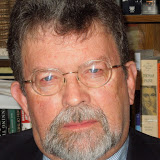Given that it was the Freeh Report that provoked both the rash and unconscionably harsh sanctions imposed by the NCAA upon Penn State and the cowardly willingness of the Penn State President and the Board of Trustees to swallow them, I believe it's time for somebody to conduct a thorough examination of the report, if only to assure that the report's scathing criticism of Penn State's response to the 1998 investigation is justified and that its evidence of a cover-up by Penn State in 2001 actually supports the report's conclusion of a cover-up at Penn State.
For, regardless of what incompetent reporters, irresponsible commentators or your uninformed friends have told you about the Sandusky Child Molestation Scandal and Penn State, all of the available evidence still indicates the Penn State President, Graham Spanier, Senior Vice President for Finance and Business, Gary Schultz, Athletic Director, Tim Curley and Head Football Coach, Joe Paterno were aware of only two instances of possible misconduct by Sandusky. The first occurred in May 1998, the second in February 2001.
Unfortunately, the fact that there were only two instances hasn't prevented the authors of the Freeh Report from engaging in unsubstantiated speculation about other instances. Here's how the report throws prejudicial sand in your eyes: "Before May 1998, several staff members and football coaches regularly observed Sandusky showering with young boys in the Lasch Building. None of the individuals interviewed by the Special Investigative Counsel notified their superiors of this behavior. [my emphasis] Former coach Richard Anderson testified at Sandusky's trial in June 2012 that he often saw Sandusky in the showers with children in the football facilities but he did not believe the practice to be improper." [p. 40]
In the very next paragraph (on page 41), the report notes that "The Centre County jury convicted Sandusky in June 2012 of assaulting three different boys at Penn State's football facilities and other places on campus before May 1998."
Who doubts that the sequencing of these two paragraphs is intended to suggest not only that the individuals who observed Sandusky in the shower with young boys did something wrong, when they failed to report such incidents, but also that these failures to report Sandusky enabled him to assault three boys during the period under consideration?
Presumably, we all can agree that the second suggestion can't be true if the first suggestion is false. Presumably we all can agree that the burden of proving the first suggestion true rests with the Special Investigative Counsel that issued the Freeh Report.
So, what do they prove?
In fact, they prove nothing? There's nothing in the report that states what the staff and coaches specifically saw, nothing to explain why these observers should have reported what they saw, and nothing to link these observations of Sandusky showering with boys to the three boys actually molested between 1995 and May 1998.
There is no evidence in the report to demonstrate that the failure of the observers to notify their supervisors allowed Sandusky to remain at liberty to molest young boys. Finally, there is no evidence that even one of these observations of Sandusky showering with young boys rose to the level of a reportable crime.
(As a multi-sport athlete in high school, I often showered with coaches and thought nothing of it.)
Thus, it is difficult to avoid the conclusion that the authors of the Freeh Report gratuitously inserted the sentence: "None of the individuals interviewed by the Special Investigative Counsel notified their superiors of this behavior." If the insertion of that sentence was gratuitous, one might reasonably assume that the report's intent was to spread innuendo.
What innuendo? Why, nothing less than the possibility that these staff members and football coaches were active enablers.
If correct, then the report commences its investigation into the facts surrounding Sandusky assaults of 1998 and 2001 by offering unsupported innuendo suggesting that "they all knew."
Here's the significance of such innuendo: Last Saturday, as I was walking down Hanover Street in Boston's North End, having just finished a delicious early dinner at Saraceno's, a large, slightly inebriated man in a fedora and sunglasses noticed my Penn State polo shirt. He stopped and said: "You got a lot of balls wearing that shirt up here." Curiosity getting the better of me, I approached him to ask, "Why?"
He said: "Because, they're going to take Paterno's statue down tomorrow."
I replied: "Actually, I have mixed feelings about the statue. On the one hand, I cannot believe Paterno ever approved of the one forefinger raised in proclamation of being "Number One." On the other hand, I'm outraged that President Erickson has caved in to press and public opinion demanding the removal of the statue."
(Note: You can view every article as one long page if you sign up as an Advocate Member, or higher).





